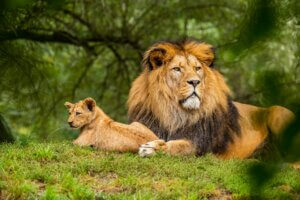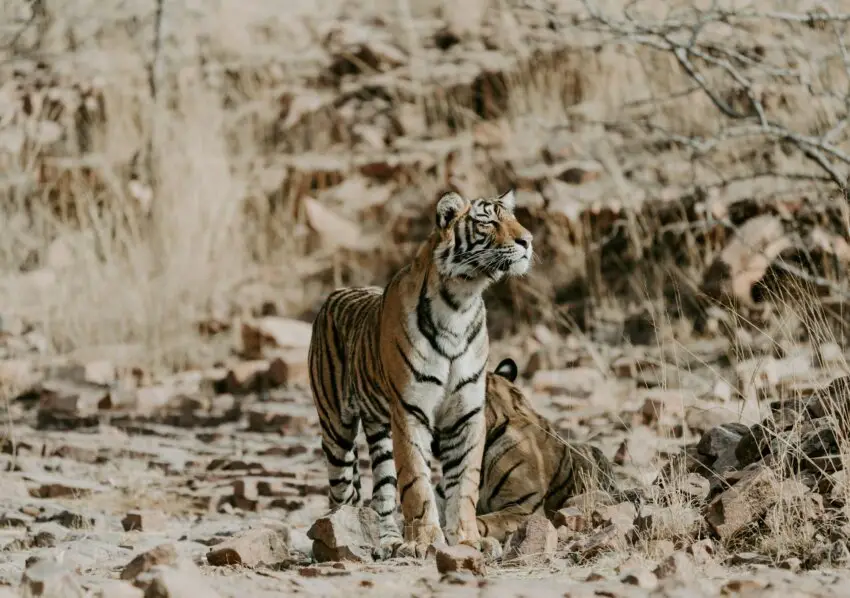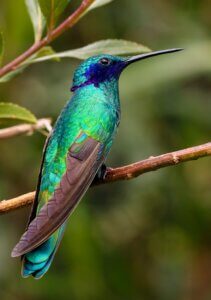We may earn money or products from the companies mentioned in this post.
Tech Innovations in Wildlife Conservation
As humanity forges deeper into the 21st century, the intersection of technology and wildlife conservation has become an increasingly critical domain for ensuring the survival of Earth’s myriad species. This illuminating exploration commences with an examination of state-of-the-art tracking and data collection methods, showcasing how GPS trackers, camera traps, and unmanned aerial vehicles are revolutionizing our understanding of the natural world. By embracing these technological tools, conservationists are unlocking new possibilities in the study and protection of wildlife, offering hope in the face of daunting environmental challenges. As we pivot to consider habitat monitoring and management to anti-poaching initiatives and community involvement, each technological advancement unfolds as a chapter in our ongoing commitment to preserving the planet’s biological treasure.
Tracking and Data Collection
Title: Tech Meets the Wild: A Game-Changer for Wildlife Tracking
In the vast and untamed wilderness, technology is a beacon of hope for conservationists and wildlife enthusiasts. The art of tracking and studying animals has been revolutionized by the dawn of tech-savvy tools that are reshaping how data is collected in the natural habitat. From the dense forests to the deep blue oceans, wildlife tracking is no longer just about boots-on-the-ground; it’s about satellites in the sky and sensors in the field.
Imagine tiny GPS tags no bigger than a coin, yet they’re powerful enough to transmit the location of an elusive snow leopard in the Himalayas. That’s just a slice of the pie. Advancements in satellite tracking and geolocation are allowing us to follow the migratory patterns of birds across continents and the long-distance swims of whales traversing the oceanic highways. This fine-tuned tracking leads to a treasure trove of data, invaluable in promoting biodiversity protection and informing habitat management plans. It’s game-changing; with pinpoint accuracy, conservationists can detect minute changes in movement or behavior, suggesting shifts in environmental conditions or health issues within wildlife populations.
The integration of artificial intelligence is taking wildlife monitoring to unprecedented levels. Camera traps, once checked manually in often challenging terrain, now boast AI algorithms that sift through thousands of images, identifying species with staggering speed and precision. Gone are the days when countless hours were spent poring over blurry photos of a passing animal. Now, machines learn, adapt, and sort the wheat from the chaff, so to speak, transforming raw images into valuable data points that sketch a living picture of biodiversity.
By weaving together these high-tech threads, conservationists are crafting a new era of wildlife management. The digital revolution in wildlife tracking is demystifying the secrets of the animal kingdom, fostering more responsive conservation measures, and lending a voice to creatures in corners of our planet where silence once spoke. This marriage of technology and the wild, indeed, heralds a hopeful horizon for monitoring and preserving the intricate tapestry of life on Earth.

Habitat Monitoring and Management
The integration of technology within habitat monitoring has enriched our understanding well beyond physical tracking devices. A key contributor to this is the development and deployment of automated sensor networks. These sensor networks are an assembly of interconnected, remote sensing devices that collect and transmit data on various environmental factors. Such networks can span across vast landscapes, capturing real-time information on temperature, humidity, soil composition, and more, which paints a comprehensive picture of habitat conditions. This information is crucial to recognizing patterns and predicting changes that may affect ecosystems, giving conservationists the means to proactively manage and protect habitats before issues escalate.
Beyond merely monitoring the environmental conditions, technology enables researchers to delve into the very nuances of ecosystem dynamics. Acoustic monitoring, for instance, has come into its own as a non-invasive method for assessing the wellness of habitats. By recording the natural sounds within an ecosystem – from the calls of the birds to the buzzing of insects – ecologists can gain insights into the presence and behaviors of species that would otherwise remain undetected. This aural snapshot offers clues about the biodiversity within an area and can be particularly useful in places where visual monitoring is challenging, such as dense forests or nocturnal environments.
To maximize the effectiveness of these technological tools, open-source software and databases for sharing collected data have blossomed. Networking between researchers and conservationists globally has fostered an unprecedented level of collaboration. Cloud-based platforms and advancements in data storage and analysis allow for collections of massive datasets that would have been unmanageable in the past. By empowering individuals across continents to access, contribute to, and analyze data, conservation efforts become more informed and unified, setting the stage for a more connected and comprehensive approach to habitat preservation and recovery. Thus, as technology marches forward, its application in habitat monitoring continues to be at the forefront of ensuring ecological resilience and sustainability.
preservation and recovery. Thus, as technology marches forward, its application in habitat monitoring continues to be at the forefront of ensuring ecological resilience and sustainability.
Anti-Poaching Solutions
Diving into- combating poaching with technology, it’s essential to realize that modern innovations present formidable tools against illegal wildlife trade. Poachers often slip through due to vast wilderness spaces and the challenges of round-the-clock surveillance. But, with drones buzzing up in the sky, rangers now have an eye that never blinks.
These Unmanned Aerial Vehicles (UAVs) can reach remote areas, send back real-time footage, and even detect heat signatures at night, keeping a watchful eye on the precious fauna below. Drone technology complements other tools, such as predictive analytics, to pre-empt poaching events before they occur. By analyzing historical data and behavioral patterns, predictive models can forecast possible poaching hotspots. This allows rangers to deploy resources efficiently, ensuring areas with higher risk are more closely monitored.
Furthermore, blockchain technology is stepping into the ring to aid in the fight against poaching. Through secure, transparent ways to track the supply chain of wildlife products, it becomes easier to flag and intercept illegal items, thus cutting off the financial incentives driving poachers. In the heart of these efforts is the ability to gather, interpret, and act on the cacophony of data. Advanced software systems can now collate information ranging from satellite imagery to drone footage, from sensor data to human intelligence, creating a comprehensive awareness net.
Forensic technology has advanced as well. DNA analysis can trace the origins of confiscated ivory, while advanced ballistic tools are aiding in pinpointing sources of illegal ammunition. Finally, widespread smartphone adoption enables community involvement; people can report poaching incidents anonymously, providing valuable ground-level intelligence that technology can then amplify for greater impact.
So, let it be heard that trackers, drones, and AI aren’t just fancy gadgets; they are the sentinels on the front lines of a digitized battle for our planet’s biodiversity. With their aid, we are sculpting a future where technology stands guard over our natural heritage, offering more than just a glimmer of hope in the ceaseless fight against poaching.

Community Engagement and Education
Moving beyond the high-tech surveillance and data-driven approaches to tackle poaching, technology plays a pivotal role in engaging communities in conservation efforts. After all, local communities are often the custodians of the natural areas that environmentalists strive to protect. Tech tools have a unique power—they connect, educate, and empower those who might feel disconnected from global conservation dialogues.
Mobile applications and social media platforms are cornerstones for boosting community involvement. They’re creating spaces where citizens can become citizen scientists. With just a few taps on a smartphone, anyone can record and share observations of wildlife, note changes in the environment, or even document possible poaching activities. Such contributions are no small beans; they’re forming extensive databases that researchers might not be able to amass on their own. Plus, these platforms offer instant connectivity—helping communities rally support, raise awareness, and perhaps most importantly, learn from one another’s experiences and successes in conservation.
In some parts of the world, gamification is turning conservation into an engaging activity for people of all ages. By transforming real-world conservation efforts into games, individuals can ‘compete’ to log the most species, clean up the most trash from natural habitats, or even to innovate solutions to environmental challenges. And it’s not all fun and games – these digital platforms provide valuable data points and foster a sense of ownership and pride within the community, which is essential for sustained conservation action.
Moreover, the footprint of technology in conservation isn’t only leaving imprints in the wild but also in classrooms. Educational programs, often enhanced with virtual reality experiences, bring the majesty of far-flung ecosystems right into the hands of curious learners. Understandably, when folks ‘see’ and ‘experience’ these wonders, albeit virtually, the drive to conserve them can grow by leaps and bounds. Through harnessing technology, tomorrow’s conservationists are being molded today, and the bond between communities and the natural world around them is strengthening, allowing for a future where both can thrive.

Through the lens of innovation, we have ventured across a technologically enriched landscape that stretches from the vast savannahs monitored by drones to the intimate wildlife encounters captured through the eyes of camera traps. This journey has not only highlighted the tools that empower rangers and researchers but has also underlined the vital role of local communities, whose engagement is essential to the tapestry of conservation. As the drumbeat of technological progress marches unwaveringly forward, it compels us to steward the natural world with an informed, compassionate, and proactive approach, ensuring that the wildlife and habitats we treasure today can flourish for generations to come.
You Might Also Like – Assistive Technology



